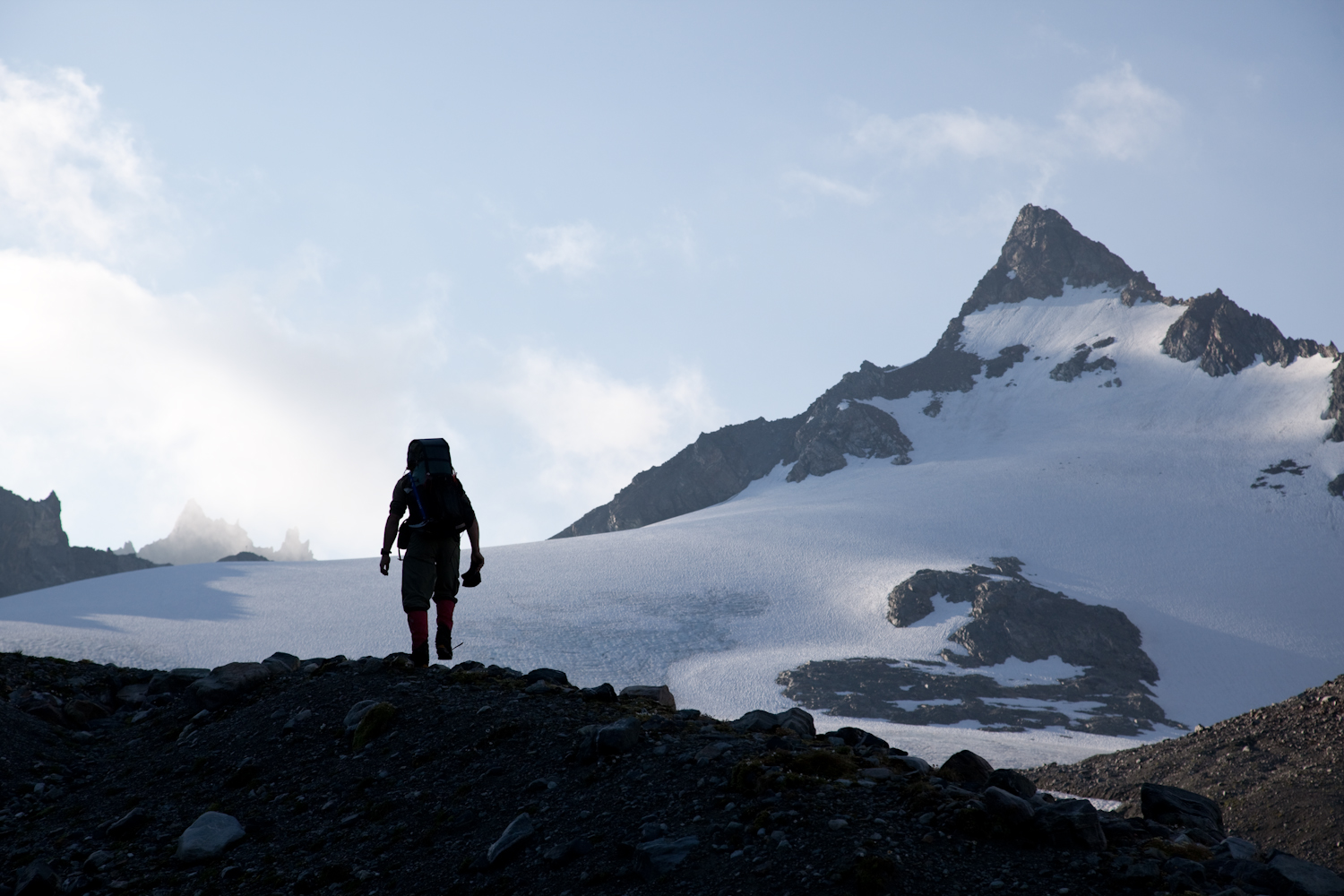
Stepping across language divides

“As I reflect back on the last couple weeks on the Swiss border my thoughts tangle between the weeks themselves and the year that led up to them,” John Harlin writes.
Harlin is currently following Switzerland’s southern border with Italy, in an attempt to circle the country by walking, climbing, cycling and paddling. In this report, the American climber and writer reflects on the first part of the mountain stage:
“However complex and challenging my own life has been, it pales in comparison to the struggles these border regions have seen.
This is the third and hopefully final grand stage of my border journey launched just across the Rhine River from where I put in with kayaks last October in the company of Konrad Kirch and friends.
It felt strange to see the ramp where we carried the kayaks so long ago. I had felt lonely and unready back then, in part because of all the transitions at home.
My family had just moved back to the States after five years in Mexico, my daughter had barely begun high school, and I wasn’t ready to leave them. It took a while for the rhythm of travel to slip into my soul.
Desktop to mountaintop
This time was easier. Siena had finished her first year of high school with flying colors to make all of us proud. We had thoroughly settled. I’d just finished a massive desk-bound project. And I was ready for adventure.
That’s what I’ve gotten myself into. And it feels great. So far it’s been mostly a stunningly beautiful – if excessively wet – backpacking trip with plenty of culture.
I’m being joined by a climbing partner for a few days of glaciers and perhaps even some genuine rock climbing on the easternmost 4,000 meter peak in the Alps.
Besides the incredible scenery, the thing that has most intrigued me so far has been the transitions in languages and cultures. The two are intertwined but hardly the same.
It started with German, which seems simplistically similar to a non-German speaker. But that’s a laughable lumping to a Swiss, Austrian, Liechtenstein, or actual German.
Each of these has its own, not only accent, but variety of strong dialects, so that which side of the border you come from is plain to the ear. These distinctions tell the tales of centuries of alliances, battles, isolation, and trade.
And then things get interesting. As I dropped south into Martina where Austria switches with Italy as Switzerland’s neighbor, the Italians spoke German while the Swiss spoke an ancient Latin tongue called Romansh that to me sounds an awful lot like Italian.
Only 50,000 people in the world speak Romansh, all of them in pockets of this part of Switzerland. But don’t think of Romansh as merely one language. It can be split into four major sub groups depending on which valley you’re in. Some sound more French than Italian, though really they’re neither.
German-speaking Italians
The actual Italians across the border speak German because really they’re Tyrolean and would rather have nothing to do with Italy.
Eventually, though, as I headed further southward, the Italians have dark hair and olive skin and spoke their country’s language.
Meanwhile, on the Swiss side, the language also switched to Italian, though the people didn’t look it. When you ask a Swiss here if he feels a connection with Italy because he speaks the language, he’ll reply “Oh no, we’re completely Swiss, not Italian at all.”
Naturally there are hundreds of reasons for all this and untangling the causes is learning Swiss history. I’ve learned a few of the lessons but mostly am still in awe of the superficial transitions as they hit my ear.
My current companion is a genuine Italian from just across the border. Maybe he’ll give me a few insights as he keeps the rope tight. I hope that at least he keeps the rope tight.”
John Harlin III was born in 1956 and grew up in Germany and Leysin, Switzerland. After his father, John Harlin II, died in 1966 attempting to be the first to climb the direct route up the north face of the Eiger, his family returned to the United States to live.
He finally climbed the Eiger north face himself in 2005, a feat that was the focus of the popular IMAX film “The Alps”. John is the editor of the “American Alpine Journal” (published by the American Alpine Club since 1929) and a contributing editor to “Backpacker” magazine.
John Harlin began his attempt to follow the entire Swiss border in June 2010. But barely a week in, he broke both of his feet in a mountaineering accident.
Once the bones had healed Harlin resumed his adventures. Last autumn he paddled the Rhine, cycled around Schaffhausen, biked the crest of the Jura and kayaked across Lake Geneva.
This summer he is travelling clockwise from eastern Switzerland to end near the site of his accident, the Mont Dolent, where the borders of Italy, France and Switzerland come together.
To follow Switzerland’s mountain border, John Harlin will ascend and descend around 220,000 vertical metres. It is the equivalent of going up and down Mount Everest – from the sea to summit – 12 times.
Lowest point: The borderline running across Lake Maggiore (193m)
Highest point: The top of the Dufourspitze (4,634m)

In compliance with the JTI standards
More: SWI swissinfo.ch certified by the Journalism Trust Initiative




























You can find an overview of ongoing debates with our journalists here . Please join us!
If you want to start a conversation about a topic raised in this article or want to report factual errors, email us at english@swissinfo.ch.